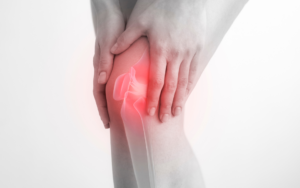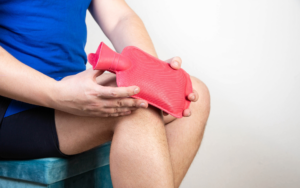When the temperatures drop and the chilly winds start to blow, many people find themselves facing a common adversary – joint pain! The connection between cold weather and joint pain is a topic that has generated significant debate and concern, but the relationship is not entirely clear-cut. While many people report experiencing increased joint pain during cold weather, the scientific evidence is mixed, and there is no consensus on the exact mechanisms behind this phenomenon.
In this comprehensive article, we will look into the intricacies of how cold weather affects knee and joint pain, the science behind it, and various strategies to alleviate the discomfort. Whether you’re a patient experiencing joint pain or a healthcare provider looking to better understand and address this issue, the information provided here will prove valuable.
Understanding Pain and Stiffness in Cold Weather
Pain and stiffness in cold weather, often colloquially referred to as “cold-induced aches,” are common phenomena experienced by many individuals, particularly those with pre-existing joint or musculoskeletal conditions. This discomfort arises due to various interconnected physiological responses to the cold.
When exposed to low temperatures, blood vessels constrict to conserve heat, reducing blood flow to the extremities and vital organs, which can make muscles and joints stiffer. Additionally, the body’s natural response to cold is to produce less synovial fluid, a lubricant in our joints, leading to increased friction and discomfort during movement. Muscles may also tense up in an attempt to generate heat, exacerbating the sensation of stiffness.
While not everyone is equally affected, these responses to cold weather can intensify pre-existing conditions such as arthritis, causing increased pain and discomfort. Therefore, it’s essential to stay warm, maintain proper hydration, and engage in gentle, regular physical activity to mitigate these effects and promote overall joint and muscle health during colder seasons.
What Causes Joint Pain in the Cold
Many individuals, especially those with pre-existing joint conditions like arthritis or fibromyalgia, start to notice an increase in pain and stiffness in their joints during cold weather. This phenomenon has been a subject of interest for medical professionals and researchers. But what is the cause behind this cold weather-induced discomfort?
One significant factor contributing to increased joint pain and stiffness during cold weather is changes in barometric pressure. Barometric pressure, also known as atmospheric pressure, is the weight of the air in the atmosphere.
When it drops, which often occurs during weather fluctuations and cold fronts, it can affect the pressure inside our joints. Joints contain synovial fluid, a lubricating substance that helps cushion and protect them. When atmospheric pressure decreases, this fluid can expand, putting pressure on the joints and potentially leading to increased pain and discomfort.
Another notable cause of joint pain in cold weather is muscle contraction. When our bodies are exposed to cold temperatures, the natural response is for muscles to contract and tighten. This is a defense mechanism to help maintain our core body temperature. However, this reflexive muscle tightening can inadvertently put extra pressure on the surrounding joints.
The added tension in the muscles can lead to stiffness and discomfort, especially in the joints that are most susceptible to these muscle contractions. The knees, in particular, are often vulnerable to muscle contraction-induced pain during cold weather, making movements such as walking or outdoor physical activities more painful.
Moreover, cold weather can lead to vasoconstriction, which is the narrowing of blood vessels to conserve body heat. As a result, the extremities, including the joints, receive less blood flow. Reduced blood flow means less oxygen and nutrients are delivered to the joints via the bloodstream. This decrease in circulation can lead to joint stiffness and discomfort, as the joint’s ability to repair and regenerate tissue is compromised. Additionally, the reduction in blood flow can make the joints feel colder, contributing to the perception of discomfort.
Ways to Ease Joint Pain in Cold Weather
Easing joint pain in cold weather is a crucial goal for many individuals, as it can significantly impact their quality of life. To effectively alleviate joint discomfort, consider these four elaborate strategies:
Stay Warm
Staying warm is a fundamental strategy to alleviate joint pain in cold weather. Cold temperatures can lead to increased muscle tension and stiffness, making it crucial to maintain a comfortable and warm environment for your body. However, dressing appropriately in layers is essential to keeping your body and joints warm. You can start with thermal undergarments to provide insulation close to your skin. Then add layers of clothing, such as long-sleeved shirts and sweaters, to trap heat and create a barrier against the cold. Don’t forget to wear thermal socks and consider thermal gloves to keep your extremities warm.
Also, applying heat directly to the affected joints can provide quick relief. Heating pads and electric blankets are excellent options for at-home use. Warm baths can be especially soothing for joint pain as they relax the muscles and provide whole-body warmth.
Additionally, warm compresses, such as microwavable heat packs, can be applied directly to the affected joints for localised heat therapy. These methods help increase blood flow, relax muscles, and reduce the sensation of stiffness, making it easier to manage joint pain in cold weather.
Easing joint pain in cold weather is a crucial goal for many individuals, as it can significantly impact their quality of life. To effectively alleviate joint discomfort, consider these four elaborate strategies:
Stay Active
Maintaining a regular exercise routine is essential for preserving joint health and mobility, particularly during cold weather. Low-impact exercises like swimming, yoga, and stationary cycling can help keep your joints mobile without subjecting them to excessive stress. Swimming, in particular, is an excellent option as it provides buoyancy that reduces the pressure on the joints, making it ideal for individuals with arthritis or joint pain.
Besides, incorporating daily stretching routines into your schedule can significantly improve joint flexibility and reduce the risk of pain and stiffness. Targeted stretches that focus on the joints most affected by cold weather, such as the knees and hips, can be especially beneficial. Yoga, with its emphasis on flexibility and balance, is a great way to incorporate stretching and gentle movements into your routine.
Over-the-Counter Medication
Over-the-counter nonsteroidal anti-inflammatory drugs (NSAIDs), like ibuprofen, can be effective for reducing pain and inflammation in the joints. These medications can provide relief for individuals with mild to moderate joint discomfort. However, it’s essential to consult a healthcare professional before using these drugs on a long-term basis, as they may have side effects or interact with other medications.
Furthermore, topical creams and gels, such as those containing menthol, capsaicin, or NSAIDs, can provide temporary relief by numbing the area or reducing inflammation. These products can be applied directly to the affected joints and often offer a soothing, warming sensation. They are a practical and accessible option for individuals seeking on-the-spot pain relief without the potential side effects associated with oral medications.
When should you seek medical care?
Seeking medical care for joint pain is a crucial decision that should not be delayed, especially when it comes to managing discomfort exacerbated by cold weather. Understanding the right time to seek medical attention can significantly impact your quality of life and long-term joint health. There are several key indicators that suggest it may be time to consult a healthcare professional.
First and foremost, if you are experiencing chronic and severe joint pain, it’s essential to reach out to a healthcare provider. Chronic pain that persists for an extended period or worsens over time could be indicative of an underlying issue that requires professional evaluation. The same applies if you find that your joint pain is limiting your mobility and preventing you from engaging in your daily activities. Joint pain should not impede your ability to lead a fulfilling life, and seeking medical care can provide the necessary relief and solutions to restore your mobility.
Additionally, if you suspect you may have a condition like arthritis, or if you have a family history of such conditions, it’s wise to consult a healthcare provider promptly. Early diagnosis and intervention are key to managing conditions like arthritis effectively and preventing further joint damage. If your joint pain consistently worsens during cold weather, this may also be a sign of an underlying issue that should not be ignored.
Cold weather can exacerbate pain, but persistent and severe discomfort may indicate an unaddressed problem. In such cases, seeking medical care allows for a thorough examination, diagnosis, and tailored treatment plan to be established, with the goal of providing relief and maintaining joint health.
Meet Our Pain Doctors
At Singapore Paincare, our team of dedicated pain doctors is committed to providing exceptional care for individuals experiencing joint pain and various other pain conditions. We understand the complexities of managing pain and work diligently to ensure you receive the best possible treatment.
Minimally Invasive Treatment
When it comes to managing pain, our practice focuses on minimally invasive treatment solutions. These procedures offer several advantages, including minimal downtime and the ability to provide effective pain relief right at the bedside.
Coreflex Injections
Coreflex injections consists of muscle relaxant, local anaesthesia, and anti-inflammatory solution. This procedure is ideal for those seeking relief from joint pain, particularly in the knees. Coreflex injectionsare often administered as injections directly into the knee joint or the surrounding tissues, providing targeted relief. It can help to alleviate pain, decrease swelling, and help restore normal function to affected areas like the knee joint.
PRP Injections
Platelet-rich plasma (PRP) injections uses your body’s own healing powers to reduce pain and promote tissue repair. PRP is derived from a small sample of your blood and contains a high concentration of growth factors that stimulate the healing process. PRP injections are a non-surgical approach that can effectively alleviate pain and improve joint function.
Hyaluronic Acid Injections
Hyaluronic acid injections are a commonly used treatment for joint pain, particularly in individuals suffering from osteoarthritis. These injections work by supplementing the natural hyaluronic acid found in joint fluid. Hyaluronic acid plays a vital role in joint health, providing lubrication and cushioning to reduce friction and pain during joint movement. When osteoarthritis or other joint conditions deplete the natural hyaluronic acid, these injections aim to restore it, promoting smoother joint mobility.
These minimally invasive treatment options are a testament to our commitment to providing the most advanced and effective solutions for pain management. They offer the convenience of minimal downtime and the potential for long-lasting relief, helping you regain your mobility and enjoy a life with reduced pain.
Conclusion
Understanding how cold weather affects knee and joint pain is essential for anyone looking to manage their discomfort effectively. By staying warm, staying active, and seeking medical care when needed, individuals can find relief and maintain their joint health even during the coldest months of the year. If you’re experiencing ongoing joint pain, it’s crucial to consult with a healthcare professional who can provide a tailored treatment plan, including minimally invasive options like Coreflex, PRP, or hyaluronic acid injections. Don’t let cold weather keep you from enjoying a pain-free, active lifestyle.






